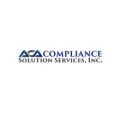Everything You Need To Know About The IRS Form 5500

Form 5050- Detailed Overview
There are numerous tax filing requirements for businesses, and avoiding federal penalties is perhaps the largest requirement for them- in the current scenario. These requirements continue to grow with the law implementing new rules and regulations such as those under the Affordable Care Act (ACA). One such publicized requirement is to annually file Form 5500 to avoid hefty ACA late filing penalties.
Generally, a Form 5500 contains information about employee health and welfare benefit plans, filed with the U.S. Department of Labor (DOL). The main purpose of the form is to provide information about the plan's operations of benefit plans, financial conditions, and compliance with the government regulations as required by ERISA and the IRS. Remember, the health and welfare plans sponsored by a government employer or by a church do not require the filing of Form 5500.
Altogether, there are three versions of the 5500, and which version of the form is appropriate for you will depend on the size of your business and the structure of your retirement plan.
Form 5500
Form 5500 is for public and private sector businesses with 100 or more participants on the first day of the plan year.
Form 5500-SF
Form 5500-SF is the short form version for plans with fewer than 100 participants at the beginning of the plan year.
Form 5500-EZ
Form 5500-EZ is an annual information return that is required to be filed by only one participant (owners/partners and their spouses).
Form 5500 due dates
Generally, the due date to file Form 5500 with the IRS is July 31 for a calendar-year plan i.e. the end day of the seventh month following the close of the plan year. If July 31 falls on a weekend or a holiday, then the following business day is considered as the due date to file Form 5500. To avoid late filing penalties, the IRS also gives an optional two-and-a-half-month extension for plan administrators that fail to complete their form by July 31.

Failing to meet these ACA state filing deadlines by the employer or the plan administrator can result in - penalty assessments from the local and state governments. These penalty assessments are in addition to those linked with the ACA’s Employer Mandate. Additionally, the plan administrator must also keep a copy of Form 5500, including the associated schedules and attachments, well in advance of the deadline.
Late Filing Penalties for Form 5500
Unfortunately, employers that fail to file Form 5500 can be penalized twice- both from the Department of Labor (DOL) and the IRS. The IRS penalty for employers who fail to file the IRS Form 5500 on the specified date is $250 per day, which goes up to a maximum of $150,000 per plan year, while the DOL penalty for late filing can shoot up to $1100 with no cap on the maximum amount. Therefore, every employer should be aware of these plans and prepare accordingly to avoid unnecessary penalties from both the IRS and the DOL.
Common Form 5500 errors
It is crucial to give proper attention and carefully fill the Form 5500. As per the IRS, any employer or plan administrator entering incorrect information or unintentionally leaving a field blank when filling out Form 5500 may result in a compliance check by the DOL.
Form 5500 Filing Solutions
The IRS recommends hiring an outside service provider to help you meet the annual deadline for ACA Form 5500 e-filing or the deadlines associated with state-wide reporting. If your business needs assistance in meeting the ACA deadlines this year, contact the experienced ACA Compliance Solution Services, Inc professionals today to get your filings completed on time while reducing your potential ACA late filing penalty risk.
Other articles and publications:
Articles and publications of other companies:
- +1 (877959) 395-3
- 20700 Ventura Blvd. Suite 235 Woodland Hills, CA
- www.acacss.com






